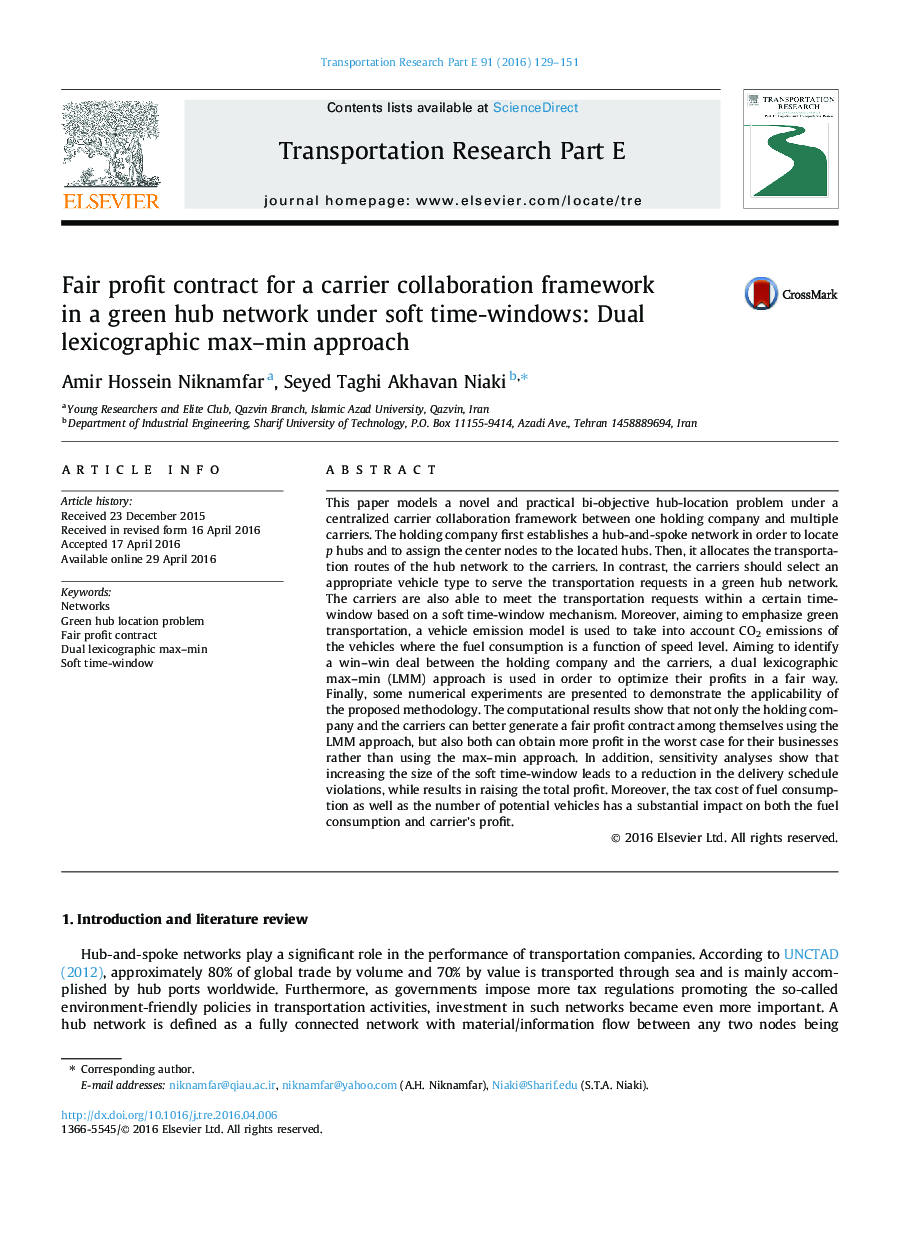| Article ID | Journal | Published Year | Pages | File Type |
|---|---|---|---|---|
| 1022960 | Transportation Research Part E: Logistics and Transportation Review | 2016 | 23 Pages |
•A bi-objective hub location problem in a collaborative framework is investigated.•A fair profit contract using the dual lexicographic max–min approach is developed.•A soft time-window mechanism for a green transportation in HLP is proposed.•Carriers’ objectives and their selection process are considered in a green hub network.•Results show that the holding company and the carriers generate more and fair profit.
This paper models a novel and practical bi-objective hub-location problem under a centralized carrier collaboration framework between one holding company and multiple carriers. The holding company first establishes a hub-and-spoke network in order to locate p hubs and to assign the center nodes to the located hubs. Then, it allocates the transportation routes of the hub network to the carriers. In contrast, the carriers should select an appropriate vehicle type to serve the transportation requests in a green hub network. The carriers are also able to meet the transportation requests within a certain time-window based on a soft time-window mechanism. Moreover, aiming to emphasize green transportation, a vehicle emission model is used to take into account CO2 emissions of the vehicles where the fuel consumption is a function of speed level. Aiming to identify a win–win deal between the holding company and the carriers, a dual lexicographic max–min (LMM) approach is used in order to optimize their profits in a fair way. Finally, some numerical experiments are presented to demonstrate the applicability of the proposed methodology. The computational results show that not only the holding company and the carriers can better generate a fair profit contract among themselves using the LMM approach, but also both can obtain more profit in the worst case for their businesses rather than using the max–min approach. In addition, sensitivity analyses show that increasing the size of the soft time-window leads to a reduction in the delivery schedule violations, while results in raising the total profit. Moreover, the tax cost of fuel consumption as well as the number of potential vehicles has a substantial impact on both the fuel consumption and carrier’s profit.
Graphical abstractFigure optionsDownload full-size imageDownload as PowerPoint slide
